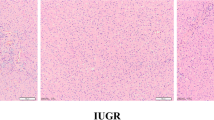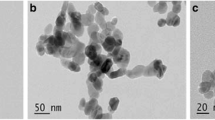Abstract
This study investigated the effects of dietary supplementation of Bacillus subtilis-zinc on growth rates of the body and organs, nutrient utilization, microbial diversity in caecum, and contents of zinc (Zn) in organs of rats fed a Zn-deficient diet. In trial 1, 72 female pregnant SD rats were allocated to two groups and respectively fed the basal diet containing 13 mg Zn/kg, or the control diet containing 38 mg Zn/kg by supplementing ZnSO4 from day 10 of pregnancy until the offspring rats 24 days old. In trial 2, 18 offspring rats from the control group were fed the control diet. Ninety offspring from the Zn deficiency group were allocated to 5 groups and were fed the basal diet drenched with ZnSO4 solution (the total Zn 38 mg/kg), the basal diet only, or the basal diet drenched with Bacillus subtilis-Zn at doses of 2, 17, and 32 mg/kg Zn respectively. Each group had 3 replicates of 6 rats. The experiment lasted for 5 weeks. We found feeding young rats the Zn-deficient diet reduced feed intake, growth rate, unitization efficiencies of nitrogen (N), and Zn content in the organs. Administration of Bacillus subtilis-Zn to rats increased feed intake and the growth rates of the body and liver, kidney and heart, increased N utilization efficiency, and the contents of Zn in heart and brain but not in liver, regulated microbial diversity in the cecal content. The optimal amount of Bacillus subtilis-Zn ranged 15~20 mg Zn/kg, with the corresponding total Zn level at 28~33 mg/kg diet, the effects of which were superior to these by adding ZnSO4 at 38 mg/kg.


Similar content being viewed by others
Abbreviations
- ADG:
-
average daily gain
- ADFI:
-
average daily feed intake
- AKP:
-
alkaline phosphatase
- BW:
-
body weight
- CD:
-
crypt depth
- Cu-Zn SOD:
-
copper and zinc superoxide dismutase
- CP:
-
crude protein
- EE:
-
ether extract
- F/G:
-
feed/gain ratio
- VH:
-
villus height
- VH/CD:
-
villus height/crypt depth ratio
- Zn:
-
zinc
References
Sachdev D, Shah HP (2001) Effect of gestational zinc deficiency on pregnancy outcomes: summary of observation studies and zinc supplementation trials. Br J Nutr 85(2):S101–S108
Gilabert ER, Ruiz E, Osorio C et al (1996) Effect of dietary zinc deficiency on reproductive function in male rats: biochemical and morphometric parameters. J Nutr Biochem 7(7):403–407
Naseh MMSA (2017) Maternal zinc deficiency and congenital anomalies in newborns. Pediatr Int 59(4):443
Shah DSHP (2006) Zinc deficiency in pregnancy and fetal outcome. Nutr Rev 64(1):15
Siggers D (2010) Zinc deficiency and congenital malformations in the rat. Lancet 305(7908):684–685
Toshiyuki F, Satoru Y, Keigo N et al (2011) Zinc homeostasis and signaling in health and diseases. J Biol Inorg Chem 16(7):1123–1134
Abonyi FO, Ogoenyi EE, Eze JI et al (2015) Growth performance, haematology and insulin profile of weanling pigs fed graded levels zinc oxide supplemented diet. Indian J Anim Res 49(5):638–644
Patil S R, Dhumal M V, Nikam M G, et al. (2011) Effect of dietary antioxidants on performance, oxidation and immumocompetance in chickens. Indian J Poult Sci 46(3):408–410
Sahraei M, Janmohammadi H (2014) Relative bioavailability of different zinc sources based on tissue zinc concentration in broiler chickens. Iranian J Appl Anim Sci 4(4):817–825
Matti K, Karl E (2010) Yeast preparations enriched with trace elements. Basic Clin Pharmacol Toxicol 59(s7):148–151
Urrutia MM, Beveridge TJ (1994) Formation of fine-grained metal and silicate precipitates on a bacterial surface (Bacillus subtilis). Chem Geol 116(3):261–280
Zhao J, Kang DC, Gao YF, et al. (2017) Overview and prospect of R&D for microbial enrichment of beneficial element foods. Food Res Dev 38(12):206–210
Reeves PGNFHJ (1993) AIN-93 purified diets for laboratory rodents: final report of the American Institute of Nutrition Ad Hoc Writing Committee on the reformulation of the AIN-76A rodent diet. J Nutr 123(11):1939
Min H, Kaiyu W, Xiaoxia L, Jing F et al (2017) Effects of dietary vitamin E on growth performance as well as intestinal structure and function of channel catfish. Exp Ther Med 14(6):5703–5710
Liu G, Wang B, Huang Y et al (2019) The growth rate, immune status, duodenal development, and cecal microbial diversity of 24-day-old offspring of SD rats received Bacillus subtilis-Cu or CuSO4 during pregnancy and lactation periods. Biol Trace Elem Res
Magoc T, Salzberg SL (2011) Flash: fast length adjustment of short reads to improve genome assemblies. Bioinformatics 27:2957–2963
Pearson WR, Wood TC, Zhang Z, Miller W (1997) Comparison of DNA sequences with protein sequences. Genomics 46:24–36
Schloss PD, Westcott SL, Ryabin T, Hall JR, Hartmann M, Hollister EB, Lesniewski RA, Oakley BB (2009) Introducing mothur: open-source, platform-independent, community-supported software for describing and comparing microbial communities. Appl Environ Microbiol 75:7537–7541
Caporaso G, Stombaugh J, Jesse K, Knights D, Koenig JE, Ley RE, Lozupone CA, Mcdonald D, Muegge BD, Pirrung M, Reeder J, Sevinsky JR, Turnbaugh PJ, Walters WA, Widmann J, Yatsunenko T, Zaneveld J, Knight R (2010) Qiime allows analysis of high-throughput community sequencing data. Nat Methods 7:335–336
Quast C, Pruesse E, Yilmaz P, Gerken J, Schweer T, Yarza P, Peplies J, Glockner FO (2012) The SILVA ribosomal RNA gene database project: improved data processing and web-based tools. Nucleic Acids Res 41:590–596
Misztak UDBS (2016) Alterations of bio-elements, oxidative, and inflammatory status in the zinc deficiency model in rats. Neurotox Res 29(1):143–154
Fukada T H S B B. (2014) Zinc signal in growth control and bone diseases. Zinc signals in cellular functions and disorders (pp.249–267). Springer, Tokyo
Wu J, Wu S, Kong X. (1994) Effects of zinc on immune organs in rats. Acta Nutrimenta Sinica (1):44–50
Murugesan GRRLFP (2014) Effects of protease, phytase and a Bacillus sp. direct-fed microbial on nutrient and energy digestibility, ileal brush border digestive enzyme activity and cecal short-chain fatty acid concentration in broiler chickens. PLoS One 9(7):e101888
Li TZ (2003) Study on nutrition of human trace element zinc. J Huzhou Vocat Tech Coll 1(2):72–76
Sauer A K, Simone H, et al. (2016) Zinc deficiency. Nutritional Deficiency (chapter 2):23–46
Zhao CF, Yang HQ, Jiang H et al (2001) Effect of zinc deficiency on the distribution of elements in the tissue of pregnant rats and their fetuses. J Hyg Res 30(5):277–279
Lin K (2016) Breeding and cultivation of zinc-rich yeast and nutritional evaluation of yeast zinc. Huazhong Agricultural University
Miller BG, James PS, Smith MW et al (1986) Effect of weaning on the capacity of pig intestinal villi to digest and absorb nutrients. J Agric Sci 107(3):579–590
Li BT, Van Kessel AG, Caine WR et al (2001) Small intestinal morphology and bacterial populations in ileal digesta and feces of newly weaned pigs receiving a high dietary level of zinc oxide. Can J Anim Sci 81(4):511–516
Natividad JM, Huang X, Slack E et al (2009) McCoy KD: Host responses to intestinal microbial antigens in gluten-sensitive mice. PLoS One 4(7):64–72
Ley RE, Turnbaugh PJ, Klein S (2006) Gordon JI: Microbial ecology: human gut microbes associated with obesity. Nature 444(7122):1022–1023
Martens EC, Koropatkin NM, Smith TJ et al (2009) Complex glycan catabolism by the human gut microbiota: the Bacteroidetes Sus-like paradigm. J Biol Chem 284(37):24673–24677
Turnbaugh PJ, Ley RE, Mahowald MA (2006) An obesity-associated gut microbiome with increased capacity for energy harvest. Nature 444:1027–1031
Lei X, Piao X, Ru Y et al (2015) Effect of bacillus amyloliquefaciens-based direct-fed microbial on performance, nutrient utilization, intestinal morphology and cecal microflora in broiler chickens. Asian-Australas J Anim Sci 28:239–246
Parvez S, Malik KA, Kang A et al (2006) Probiotics and their fermented food products are beneficial for health. J Appl Microbiol 100:1171–1185
Wang DG. (2004) Study on zinc enrichment by yeast and bioavailibity of yeast-zinc for rats. Sichuan Agricultural University, China (01):45
Funding
This work was supported by a grant from the National Waterfowl Industrial Technology System Special Fund (CARS-42-14) and National Key R&D Program “Application and Demonstration of Green Waterfowl Efficient Safe Aquaculture Technology” (2018YFD0501501)
Author information
Authors and Affiliations
Contributions
Y.H., B.W., W.G., and M.Z. conceived and designed the experiments; Y.H., W.G., and B.Y. performed the experiments; Y.H., G.L., and M.K analyzed the data and wrote the paper. All of the authors read and approved the final manuscript.
Corresponding author
Ethics declarations
The use of the animals and the experimental protocol for the animal experiments were approved by the Animal Ethics Committee of the College of Animal Science and Technology, Qingdao Agricultural University, China (protocol number 10/2018).
Conflict of Interest
The authors declare that they have no competing interests.
Study Strengths
The present study is one of the few assessments of the biological effects of Bacillus subtilis-Zn used as a new trace element source. We confirmed that Bacillus subtilis-Zn is a superior source of Zn to ZnSO4.
Study Limitations
The results from the present study were obtained from the congenital zinc-deficient rats and might not be directly parallel to humans, so further research is needed.
Additional information
Publisher’s Note
Springer Nature remains neutral with regard to jurisdictional claims in published maps and institutional affiliations.
Rights and permissions
About this article
Cite this article
Huang, Y., Wang, B., Liu, G. et al. Effects of Bacillus Subtilis-Zinc on Rats with Congenital Zinc Deficiency. Biol Trace Elem Res 194, 482–492 (2020). https://doi.org/10.1007/s12011-019-01804-5
Received:
Accepted:
Published:
Issue Date:
DOI: https://doi.org/10.1007/s12011-019-01804-5




